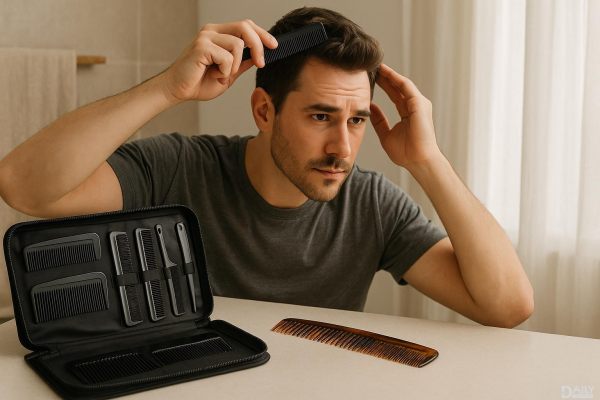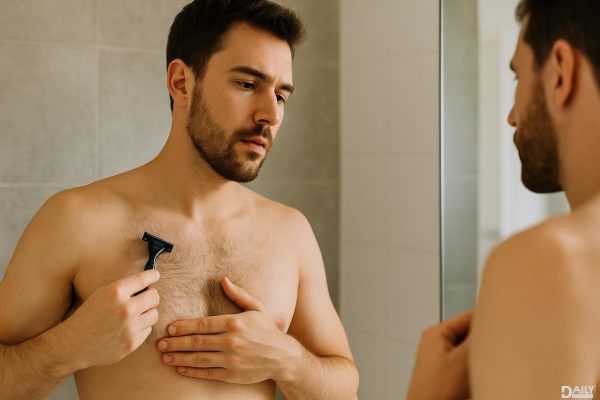Let’s be real—most guys treat their hair like an afterthought. A quick swipe with whatever comb’s lying around, maybe a half-hearted attempt at taming that cowlick, and boom—you’re out the door. But here’s the truth: your grooming routine deserves better, and a complete comb set is the unsung hero your hair (and beard, if you’re rocking one) has been begging for. In 2023, it’s time to ditch the flimsy drugstore comb you’ve had since college and invest in tools that actually work with your hair type, style, and texture. Trust us, your future self will thank you when you’re not fighting frizz, uneven part lines, or that weird dent from your old plastic comb.

That lone comb rattling around your bathroom drawer? It’s probably doing more harm than good. Cheap combs with rough, uneven teeth can cause breakage, split ends, and even scalp irritation. And if you’re using the same comb for your beard and your hair, you’re basically cross-contaminating oils and product buildup—gross. A proper comb set isn’t just about aesthetics; it’s about functionality. Different combs serve different purposes: wide-tooth for detangling, fine-tooth for precision styling, and everything in between. Skimping here is like trying to build a shelf with just a hammer—you might make it work, but it’s gonna look janky.
A legit comb set isn’t about hoarding a dozen random picks—it’s about curating the right tools for your specific needs. Start with a sandalwood or acetate wide-tooth comb for wet hair (plastic causes static and breakage). Add a sturdy fine-tooth comb for sharp part lines and smoothing flyaways. If you’ve got facial hair, a dual-sided beard comb with both wide and narrow teeth is non-negotiable. Bonus points for a folding travel comb that won’t snap in your gym bag. Pro tip: Look for combs with rounded tips to avoid scratching your scalp—this isn’t the 90s, and no one wants comb tracks.
Not all combs are created equal, and the material makes a huge difference. Plastic combs generate static, trap bacteria, and can leach weird chemicals into your hair over time. Opt for natural materials like sandalwood or horn—they’re anti-static, gentle on strands, and actually distribute your scalp’s natural oils evenly (goodbye, greasy roots). For a budget-friendly upgrade, cellulose acetate combs offer similar benefits without the luxury price tag. And if you’re bald or buzzed? A boar bristle brush still belongs in your lineup—it exfoliates your scalp and stimulates blood flow for healthier hair growth.
Here’s where things get interesting: a good comb set does way more than just style your hair. Using the right comb can reduce hair loss by minimizing tugging and breakage. It helps distribute natural oils from root to tip, meaning you might even skip a wash day without looking like a greaseball. For beard guys, consistent combing trains stubborn hairs to grow in the right direction, eliminating patchy spots over time. And let’s not overlook the psychological boost—there’s something undeniably satisfying about using a well-crafted tool that doesn’t feel like it’ll snap mid-stroke.
Start with damp (not soaking wet) hair and use your wide-tooth comb to gently detangle from ends to roots—this prevents unnecessary pulling. For styling, switch to your fine-tooth comb and work in sections, using a blow dryer on low heat for extra polish. Beard maintenance? Always comb downward first to align hairs, then use shorter strokes to shape. And here’s a game-changer: store your combs in a clean, dry place (not the shower ledge) and sanitize them monthly with a quick soak in rubbing alcohol. Your future self will high-five you when you’re not dealing with mystery scalp acne.
Upgrading your comb game isn’t about vanity—it’s about working smarter, not harder. The right tools save you time, reduce hair damage, and actually make grooming enjoyable instead of a chore. So do yourself a favor: retire that busted old comb, invest in a set that matches your hair goals, and get ready to look (and feel) noticeably sharper. After all, you wouldn’t use a butter knife to chop veggies—why treat your hair any differently?
























